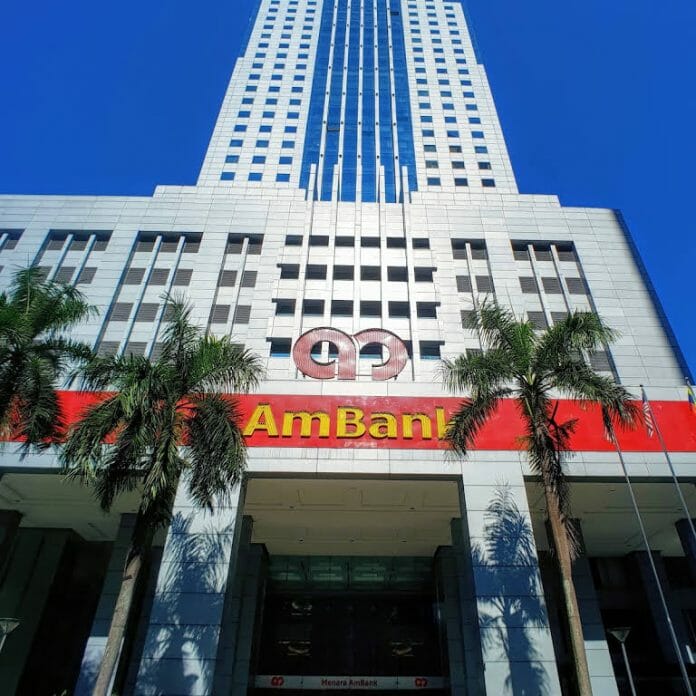S&P Global Ratings today affirmed its ‘A-‘ long-term and ‘A-2’ short-term issuer credit ratings on CIMB Bank Bhd., Malayan Banking Bhd., and Public Bank Bhd. The rating house also affirmed its ‘BBB+’ long-term and ‘A-2’ short-term issuer credit rating on AmBank (M) Bhd. and RHB Bank Bhd. The outlook on all the five Malaysian banks is negative.
This comes as it views downside systemic risks for Malaysian banks are on the rise. It considers that the economic risk trend for Malaysia has turned negative. Banks are also facing rising risk in the competitive environment due to negative government intervention. According to the report it states there is one-in-three possibility that Malaysian banks could underperform its base-case asset quality expectations in the next 12-24 months.
The protracted lockdown, rampant pandemic waves, repeated moratoriums on loan repayment, and ongoing political uncertainties in Malaysia have increased the downside risk to the recovery of the country’s banking system. These factors have also reduced the headroom in our ratings on Malaysian banks.
In the base case, S&P expects the banking industry’s nonperforming loan (NPL) ratio to reach 3%-4% and credit costs to stay at 55-60 basis points (bps) annually over 2021 and 2022, before recovering gradually. It forecasts Malaysia’s GDP to grow by 6% in 2022, and the unemployment rate to improve to 4.4%, although the rate will still be high. Malaysian banks are facing COVID-19 related credit challenges from a position of strength compared with most of their peers in the Association of Southeast Asian Nations. The Malaysian banking sector’s NPL ratio and credit costs were at historical lows of 1.5% and 8 bps, respectively, prior to 2020, and banks in general have good earnings buffer to absorb an unexpected rise in credit costs.
There is also also an increased risk of negative government intervention in the Malaysian banking industry. The risk is reflected in the repeated government intervention in relief measures given out by domestic banks such as the recent announcement to waive off fourth-quarter interest for B50 (bottom 50% of individual borrowers by income) customers. Such interventions could recur, given the ongoing political instability, and impede the banking sector’s ability to operate commercially.
Other examples of past government interventions include the two rounds of extensive, six-month automatically approved moratorium programs for all retail and small and midsize enterprise customers (combined 75% of commercial banking system loans). These have hurt banks’ profitability even as they battled asset quality stress during the current credit downturn. Those interventions could also encourage some borrowers to be less disciplined in their repayment behavior. The banking industry’s profitability was much weaker in 2020 and is likely to remain under heavy pressure during 2021 due to the interest waiver schemes and still elevated credit costs.
In the worst-case scenario, the proposed interest waiver for the B50 group, could lower the net profit of the banks we rate by more than 20% (annualized) compared with the pre-pandemic 2019 number. the estimate is based on the assumption that all B50 borrowers will avail of the waiver and the operating expenses and credit costs will remain unchanged from our original projection.
The moratorium take-up rate could rise much higher if the government’s interest waiver initiative is applicable to all eligible B50 individual borrowers under the current automatic approval application criteria. The B40 group generally accounts for 20%-25% of retail loans for our rated Malaysian banks. As of mid-August, the moratorium take-up rate for the banking industry had already gone up to 25%-30% of the domestic loan book from 15% earlier. That’s because the application for debt relief temporarily spiked during the first few weeks after the second six-month moratorium came into effect in early July.
However it anticipates that Malaysia’s banking industry will maintain a healthy level of local currency deposits over the next 12-24 months. The banks benefit from their dominant retail presence and strong consumer confidence, and Malaysia’s high savings rate of about 30% of GDP. The banks are also likely to maintain their capital strength, given their satisfactory earnings generation capability and flexible dividend payout policies.
S&P rating affirmations of the five Malaysian banks reflect those banks’ healthy financial buffers, stable market positions, good capitalization, as well as ample funding and liquidity.









